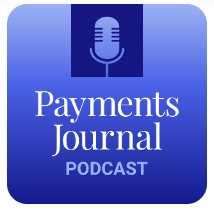Podcasts: Check Fraud is a Growing Business…Positive Pay is Only PART of the Solution
- Check fraud has grown to a major problem
- Positive pay offers tools to fight fraud
- However, positive pay adoption is fairly low
Less than five years ago, check fraud was a niche topic, with very few outside the banking industry really understanding the in's and out's of check fraud. Well, fast-forward to the present and media across the country are covering the topic -- from news stations to podcasts.
Case in point: The Feldman Report. Murray Feldman, business editor and host of The Feldman Report on WWJ Newsradio 950 in Detroit, recently covered the topic of check fraud.
We’re writing fewer checks, but more of what we write is falling into the wrong hands. Check fraud is a growing business in America. The Federal Trade Commission says consumers lost $10 billion in check fraud last year. The bad guys fish envelopes containing checks out of mailboxes, and they alter some of the names on the checks and the amount to be withdrawn from the accounts. Sometimes banking insiders actually wash checks with chemicals to remove the ink and put their own name and dollar figure in there.
Positive Pay Only Part of the Solution
In other podcast news, the PaymentsJournal Podcast, hosted by Rima Katz, recently discussed the role of positive pay in financial institutions’ organizational security. She was joined by Bruce Dragoo, Manager Solutions Consulting at Q2, John Byl, SVP Product Development and Mercantile Bank, and Albert Bodine, Director of Commercial and Enterprise Payments at Javelin Strategy & Research.
They spoke about the “concerning trend” of positive pay low adoption rates, and various barriers that seem to be slowing widespread implementation.
“The stories we’re hearing here at Q2 and from our customers and prospects during presentations, during our trade shows and things like that is, check fraud continues to be on the rise,” noted Brice Dragoo. “I mean, the number of checks are still continuing to go down, but the fraudsters are getting very creative, right? So they’re still out there stealing checks from mailboxes, they’re stealing mail trucks as well throughout that entire process also. And they’re then taking those checks and selling them to fraudsters who can then wash payee names, change dollar amounts, different things like that. And that continues to be on the rise.”
He went on to note that 33% of commercial payments globally are still made by check — “a huge opportunity for fraudsters.”
Host Rima Katz questions why only 30% of eligible companies utilizing positive pay and what are the barriers? Well, their FI may not offer the right positive pay solution, as they may only process checks, ACH, or not good fit for what the business needs.
However, it is important for everyone to understand that, while positive pay is a powerful tool for check fraud detection, is it only PART of the solution. Positive pay suffers from major flaws, including the fact that it does not include payee extraction/comparison, and it is only available for commercial customers.
Yes, it is important that financial institutions ensure that they not only offer positive pay to their corporate clients, but also include payee extraction and comparison. However, this is simply not enough. Financial institutions must also deploy sophisticated AI and ML technologies for transactional analysis that monitors account behaviors and image forensics to analyze the images of checks. Furthermore, financial institutions can increase check fraud detection capabilities by incorporating consortium data and dark web monitoring to provide the most robust check fraud detection for both corporate and consumer accounts.
